Pluto Redux
- By Maggie Masetti
- July 28, 2015
- Comments Off on Pluto Redux
By now, if you’re on the internet at all, (which you must be if you are reading this) you’ve seen the spectacular images of Pluto that New Horizons has sent back. It’s been so cool to see it spawn dozens of memes and to see so many people (and not just science geeks) actually care. I do wonder if Pluto would have gotten half as much attention this time around if it hadn’t previously been seen as being demoted from planetary status – in my opinion, seeing people have opinions about the planets is a good thing!
And my take on the Pluto planet thing is that we haven’t booted Pluto out of the solar system, we’ve just made it part of a larger picture, which includes lots of other dwarf planets more similar to Pluto, like Eris and Ceres. (There are 5 confirmed dwarf planets currently but it’s possible there are many, possibly hundreds more in the Kuiper Belt region. There might be over 10,000 of these objects outside the Kuiper Belt!)

This image of Ceres is part of a sequence taken by NASA’s Dawn spacecraft on May 5 and 6, 2015, from a distance of 8,400 miles (13,600 kilometers). Credit: NASA/JPL-Caltech/UCLA/MPS/DLR/IDA
Regardless – I think we’ll always have a special fondness for Pluto – perhaps even more so now that we’ve finally seen its heart-shaped feature.
It’s truly been an honor to watch this object come into focus from a blurry pixel to a detailed image.

Credit: NASA Read more information about each view.
You might be the last person on Earth, but just in case you have yet to see the spectacular images from New Horizons, here are some highlights!
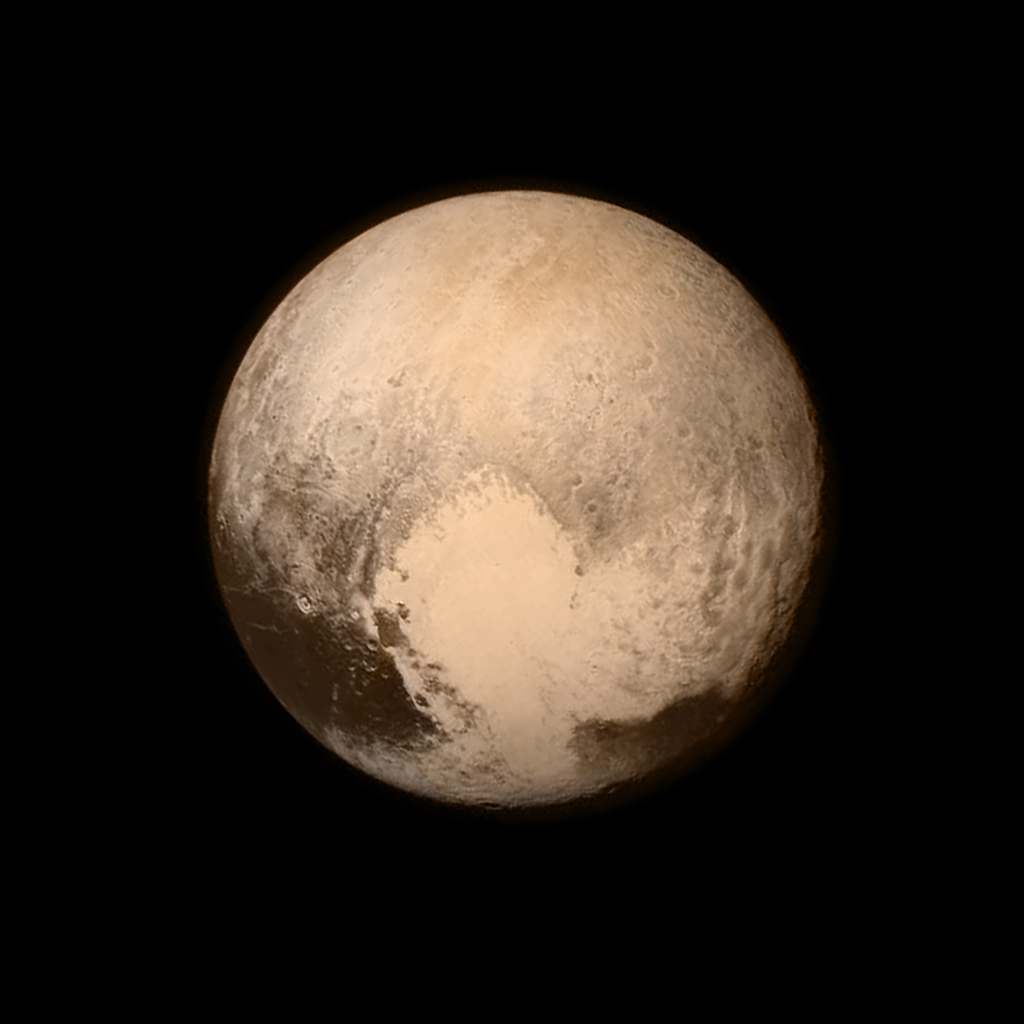
One of the final images taken before New Horizons made its closest approach to Pluto on 14 July 2015. Image Credit: NASA/Johns Hopkins University Applied Physics Laboratory/Southwest Research Institute High-res

New close-up images of a region near Pluto’s equator reveal a giant surprise — a range of youthful mountains rising as high as 11,000 feet (3,500 meters) above the surface of the icy body. Credits: NASA/JHU APL/SwRI Read more.
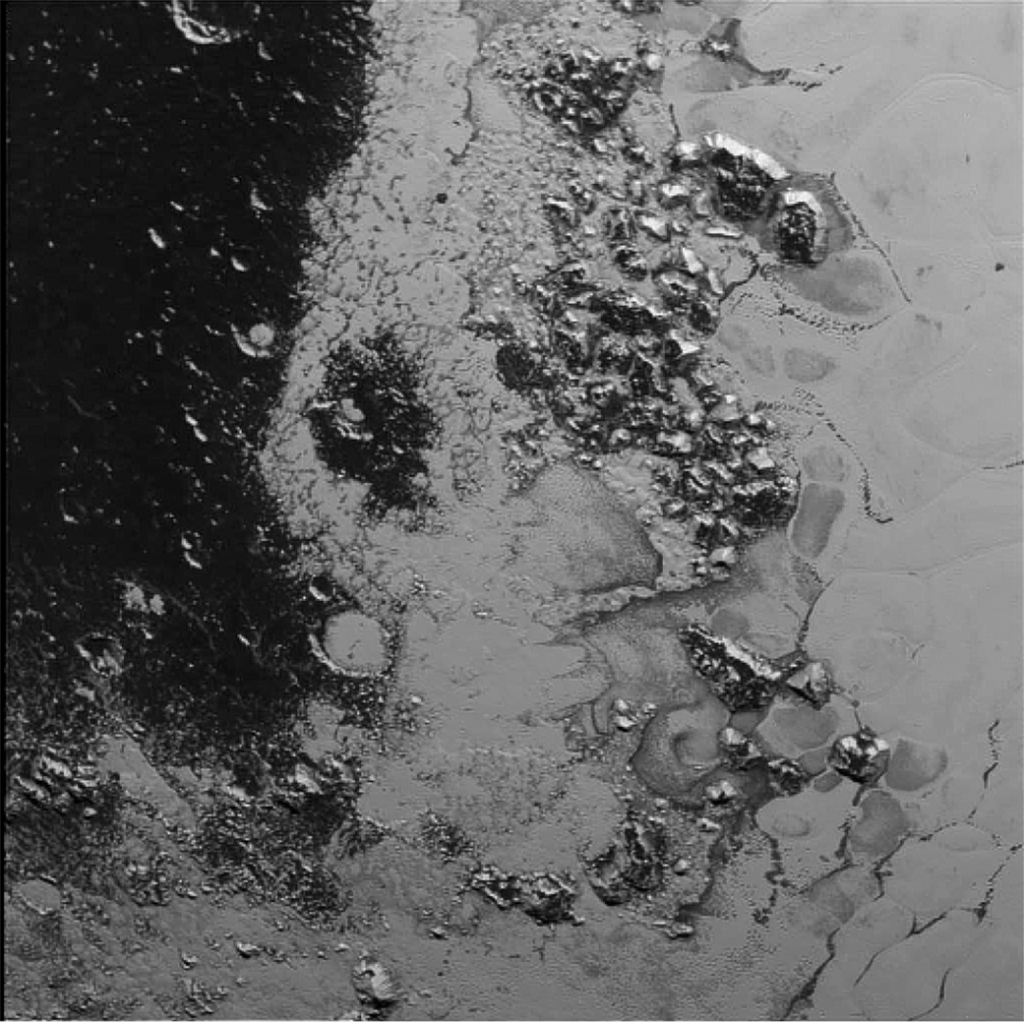
A second mountain range – these are approximately the same height as the United States’ Appalachian Mountains. Image Credit: NASA/JHUAPL/SWRI Read more.
Inside Pluto’s “heart” region…

This annotated view of a portion of Pluto’s Sputnik Planum (Sputnik Plain), named for Earth’s first artificial satellite, shows an array of enigmatic features. The surface appears to be divided into irregularly shaped segments that are ringed by narrow troughs, some of which contain darker materials. Features that appear to be groups of mounds and fields of small pits are also visible. This image was acquired by the Long Range Reconnaissance Imager (LORRI) on July 14 from a distance of 48,000 miles (77,000 kilometers). Features as small as a half-mile (1 kilometer) across are visible. The blocky appearance of some features is due to compression of the image. Credits: NASA/JHUAPL/SWRI Read more.
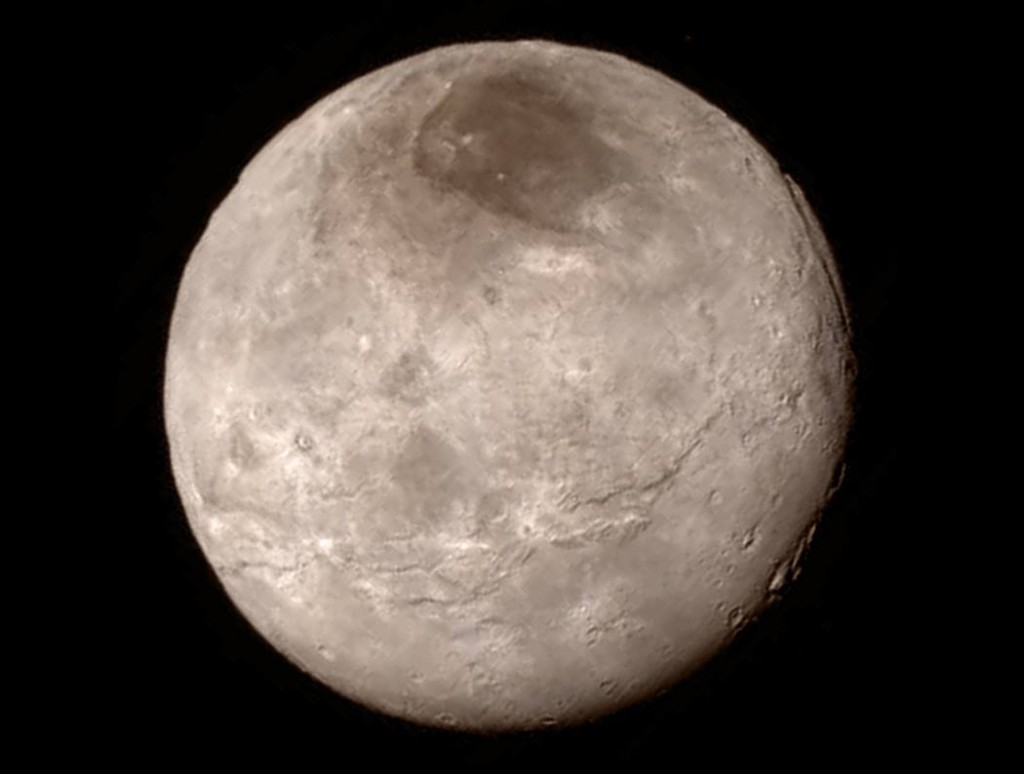
Pluto’s largest moon Charon has a surprising youthful and varied terrain, with cliffs, troughs and a dark marking nicknamed ‘Mordor’ in the moon’s north polar region. Credit:
Image Credit: NASA-JHUAPL-SwRI Read more
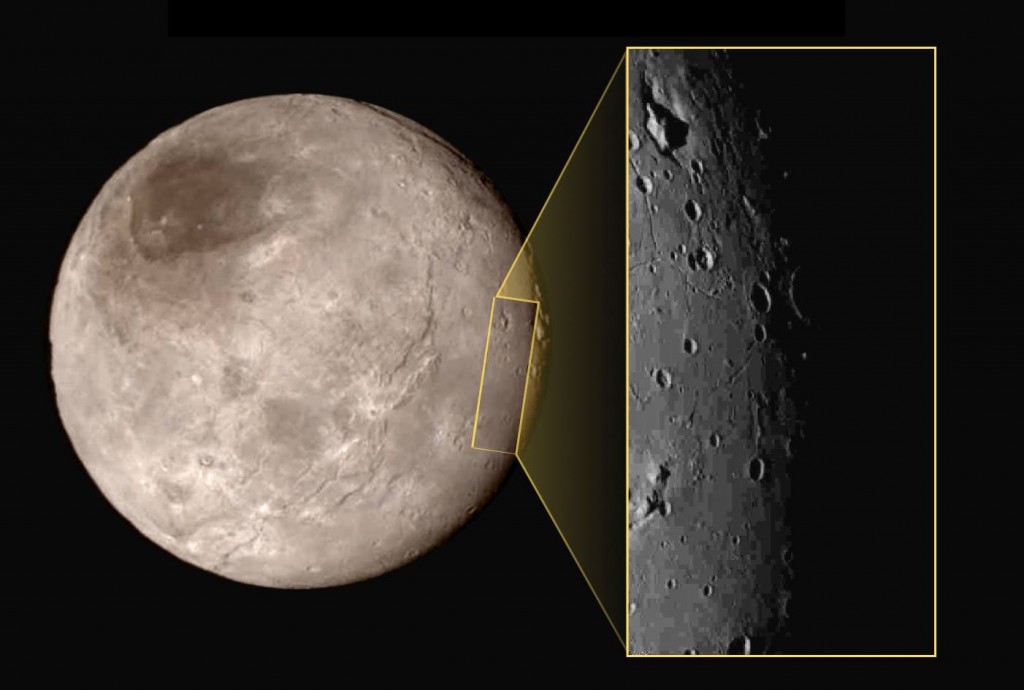
Charon and its “Mountain in a Moat”. Image Credit: NASA-JHUAPL-SwRI Read more.
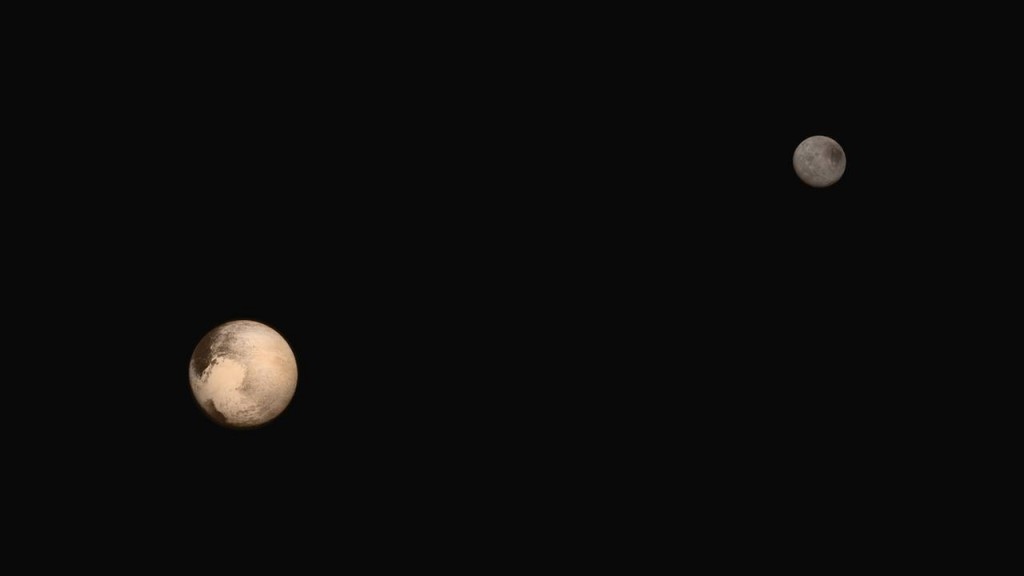
ortrait of Pluto and Charon together! The latest two full-frame images of the dwarf planet and its largest moon were collected separately by our New Horizons spacecraft during approach. The relative reflectivity, size, separation, and orientations of Pluto and Charon are approximated in this composite image, and they are shown in approximate true color. Image Credit: NASA/JHUAPL/SWRI Read more.
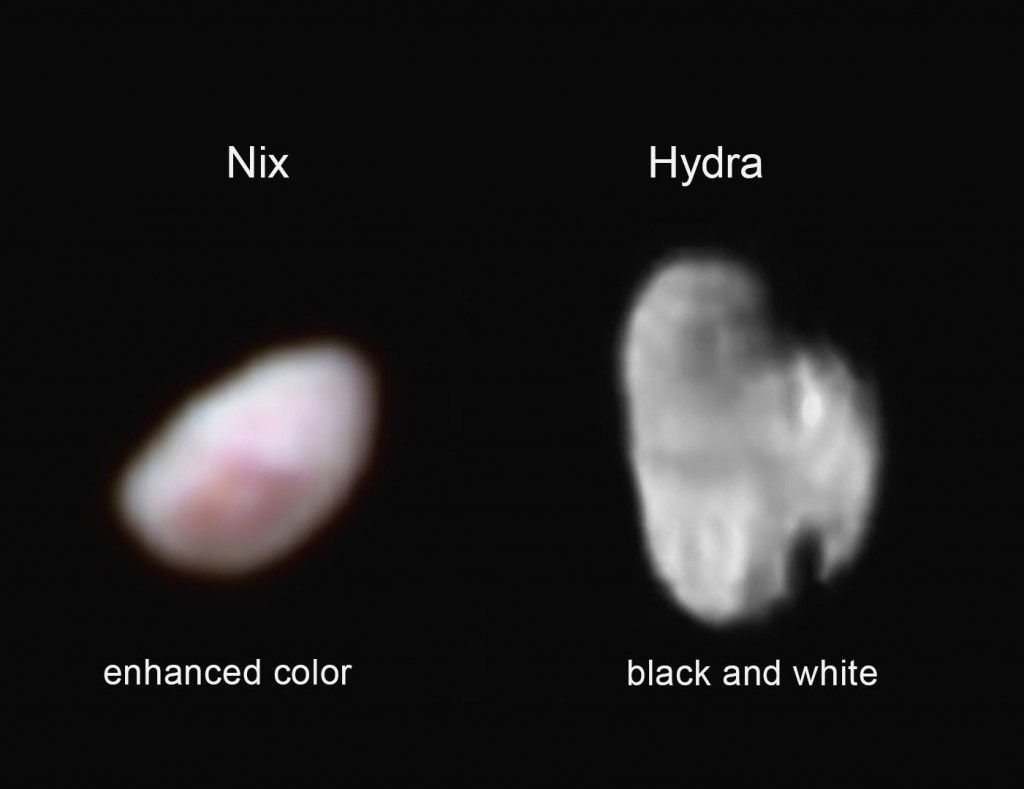
Two of Pluto’s smaller moons. Nix, the jelly-bean shaped moon can been seen in enhanced color, and appears to have a reddish region that scientists believe to be a crater. Hydra, a moon that’s shape resembles the state of Michigan, is the farthest away from Pluto. Image Credit: NASA/JHUAPL/SWRI Read more.
And lastly, the night side of Pluto:
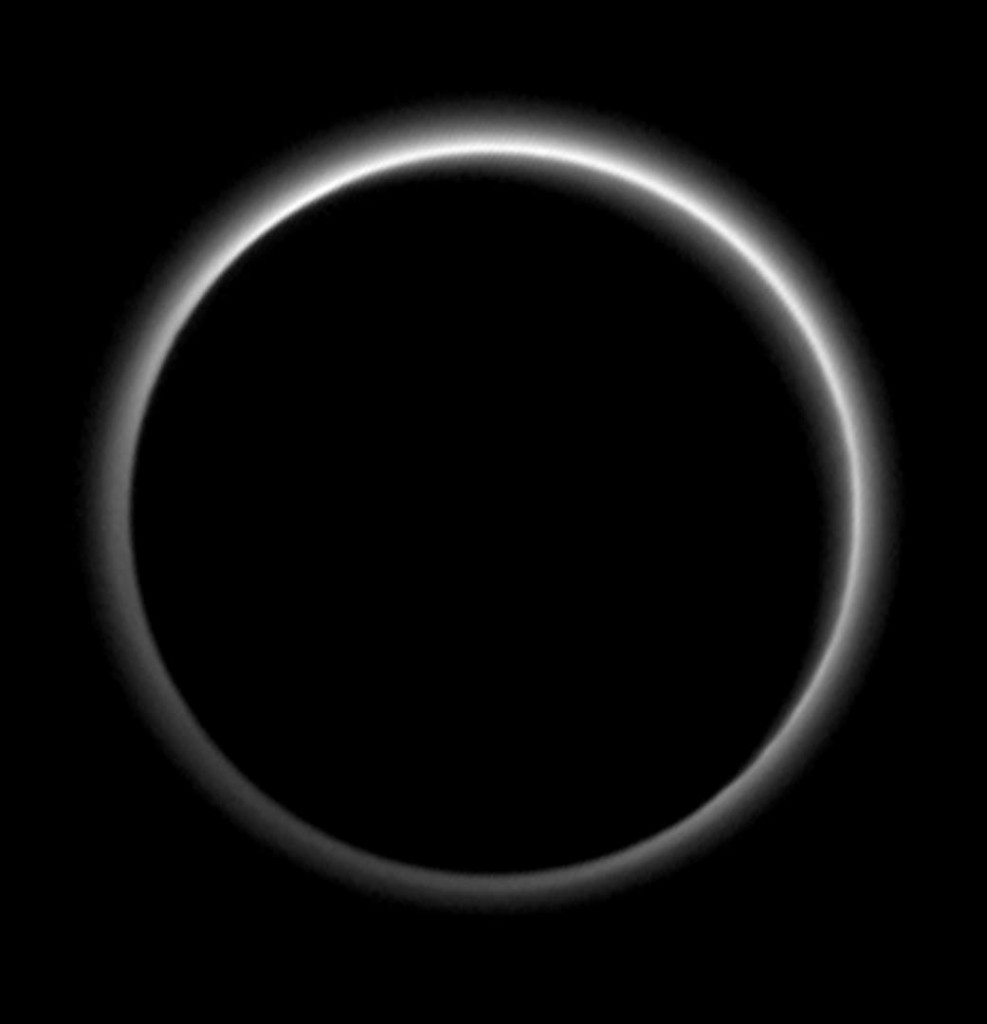
Pluto sends a breathtaking farewell to New Horizons. Backlit by the sun, Pluto’s atmosphere rings its silhouette like a luminous halo in this image taken by NASA’s New Horizons spacecraft around midnight EDT on July 15. This global portrait of the atmosphere was captured when the spacecraft was about 1.25 million miles (2 million kilometers) from Pluto and shows structures as small as 12 miles across. The image, delivered to Earth on July 23, is displayed with north at the top of the frame. Credits: NASA/JHUAPL/SwRI Read more.


